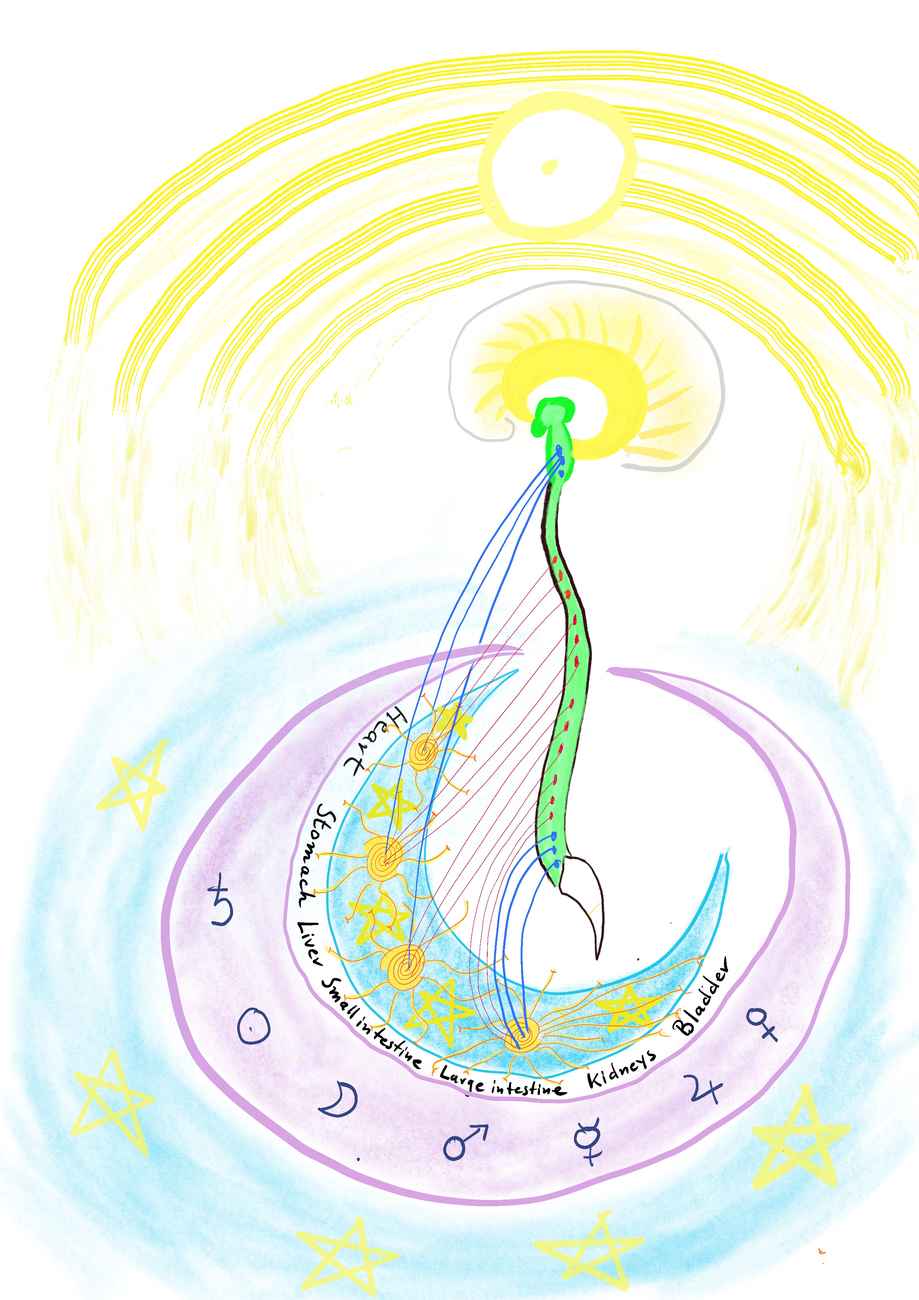Understanding the Three Areas of the Autonomic Nervous System
The autonomic nervous system is divided into three functional areas.
The peripheral area includes the nerve plexuses located in the organs, which are supplied by large nerve centers (plexes) such as the solar plexus. In the drawing, these are the orange spirals within the light blue sickle shape, which represents the Coelom, the "heavenly abdomen".
The central green column represents the connections between the peripheral autonomic plexuses and the spinal cord up to the brain stem. It shows the connections between two functionally different elements, the sympathetic nervous system (red) and the parasympathetic nervous system (blue), which act antagonistically to one another. One activates, while the other ensures the recovery phases.
Above, the hypothalamus (green area at the top of the spine) takes on higher-level control functions for the entire autonomic nervous system (e.g., water balance of the body, body temperature, menstrual cycle, hunger and thirst, etc.). The hypothalamus focuses on the whole, the opposites between the sympathetic and the parasympathetic nerves are merged into the whole here.
Under the cerebrum, the limbic system (yellow) processes what happens unconsciously within the autonomic nervous system and connects it to our feelings and consciousness occurring at the time of an event. The cerebrum is of great importance for our memory.













